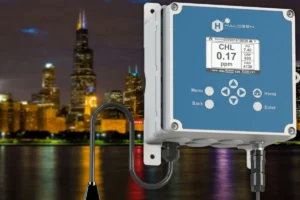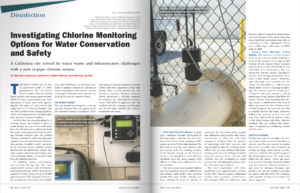
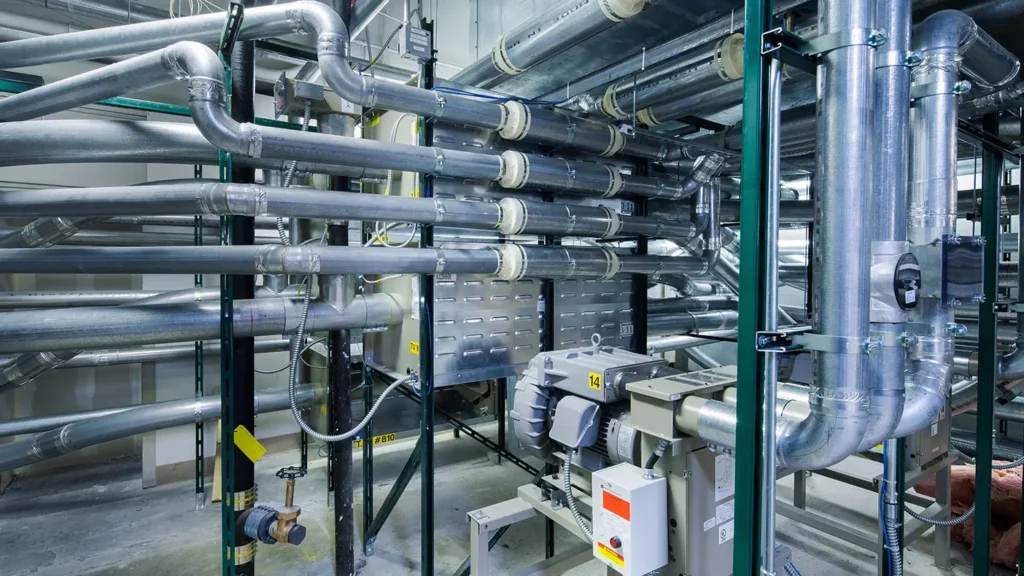
Avoid Cultivating Legionella in A Building Hot Water System With The Right Chlorine Analyzer
Domestic Hot Water and Legionella
CDC points to consistent monitoring as a valuable tool in the fight against Legionella and other waterborne risks. Halogen's MP5™ chlorine monitoring sensor provides a good starting point in a low-maintenance solution.
Domestic hot water systems in residential buildings and healthcare facilities can introduce risk to residents and so a monitoring solution is a critical component to prevent infections–especially in healthcare facilities, where there are high concentrations of vulnerable populations, staff, and visitors. Halogen’s MP5™ can help building water service operators identify Legionella-friendly conditions so that mitigations can start before an outbreak occurs.
The CDC documentation on Legionella for Water Management Systems explains “People can get Legionnaires’ disease if they breathe in water droplets containing Legionella [for example aerosolized droplets from a shower head] or if contaminated water goes into the lungs while drinking. Certain groups of people are at increased risk for getting Legionnaires’ disease, including those 50 years or older, current or former smokers, and people with chronic disease or weakened immune systems.”
Many factors can contribute to limiting the ability of Legionella or other bacteria to flourish in a building water system. Designers seek to maintain constant circulation and avoid dead-legs or other opportunities for water to become stagnant. In addition, systems must not let the water temperature stratify which could allow pockets of water temperature friendly to Legionella (77º-119ºF, 25-50°C ). Some municipalities specify that hot water systems should be stored at a minimum of 140º F (60ºC). However, anti-scald rules may put water in the upper range of those temperatures, so the CDC recommends engineering controls to mix hot and cold water together close to the point of use and monitoring the temperature and residual detergent levels.
The CDC’s notes for Owners and Managers of Buildings and Healthcare Facilities that “when there is a reduction in disinfectant levels in building water systems, Legionella can grow. In some buildings, processes such as heating, storing, and filtering can reduce the amount of available disinfectant, allowing Legionella to grow if steps are not taken to stop it. Your building water supply may need long-term supplemental disinfectants added to the water to boost the level of disinfectant and help limit Legionella growth.” (Italics ours).
The CDC guidance on Legionella prevention also includes directions to Monitor Building Water. “The water management program team should regularly monitor water quality parameters, such as disinfectant residual and temperature levels. By monitoring these parameters, the team can ensure that building water systems are operating in a way to minimize hazardous conditions that could encourage Legionella and other waterborne pathogens to grow.” (For Hotel and Resort owners and operators, the CDC extends the water management program to include monitoring Cooling Towers, Showers, Hot Tubs, Unoccupied Floors & Rooms as well as Decorative Fountains.) While manual parameter sampling is effective, an online in-building monitoring system would reveal a low-residual condition in near-time, rather than waiting for scheduled tests which could be overlooked. Halogen’s MP5™ multiparameter sensor can be inserted directly in a hot-water pipe to monitor free chlorine, pH, temperature, conductivity, and oxidation-reduction potential (ORP) in near-time in the pipe with no required waste stream.
In conclusion effective building water management solution (including the domestic hot water system) will do more than maintain circulation, reducing stratification, stagnation, and Legionella-friendly temperatures. Consistent accurate monitoring of residual detergent levels can alert building systems operators of conditions that could lead to an outbreak long before a hard-to-kill pathogen gets a foothold in the system. Halogen’s MP5™ is a good foundation for an online, near-time monitoring solution. Contact Halogen to find a solution for your specific requirements.
Many Applications Benefit from a Self-Cleaning, Low-Maintenance Analyzer
Halogen’s technology helps maintain stable calibrations while lowering maintenance requirements. This combination makes MP5™ a good option for monitoring stations that might otherwise involve constant crew rollouts for operator interventions. When packaged with remote telemetry options, the MP5™ can be the foundation for IoT monitoring solutions. See below for example applications.

REMOTE RESERVOIR
Suspended directly in the a drinking water reservoir, an MP5™ chlorine sensor can report via a cellular telemetry option. When running on an optional battery kit, the MP5™ can sample at predefined intervals and operates with no maintenance interaction for a month.

END-OF-LINE TESTING
Municipalities that currently have to roll a truck to know with certainty that homes at the end of the line are getting appropriate PPM can lower costs and increase accuracy by putting an MP5™ directly in the neighborhood water pipe. Data can broadcast via cellular telemetry.
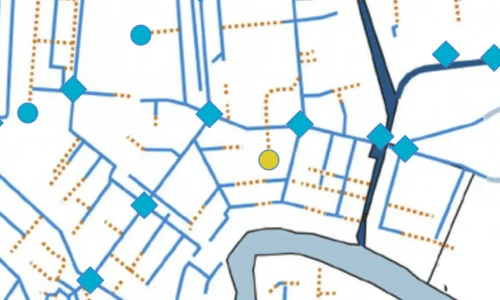
GRID MONITORING
Water aging and other degradation issues in a distribution grid can be discerned by deploying MP5™ analyzers at desired points in the system. Operators can track temperature, conductivity, pH, and even ORP no matter the flow or pressure (up to 10.5 bar) via remote telemetry options.

CRUISE SHIP DRINKING WATER
To guard against Legionella, cruise lines need to monitor chlorine levels in their freshwater tanks, guard against contamination from source providers, and sample at the actual taps. SensiCLĒNE™ technology and the flexible installation options of the MP5™ analyzer allow operators to create solutions that will work in this tough environment.
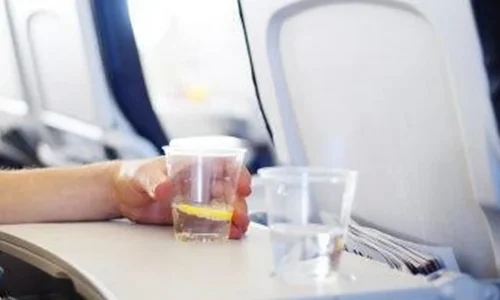
AIRLINE WATER TANKER MONITORING
Studies in the UK show water tankers as a source of contamination in airline drinking water, but monitoring these mobile refill units is a highly manual process, making consistency difficult in a rushed environment. Self-cleaning, durable, and flow-independent, the MP5™ can be the foundation of an source-side solution.
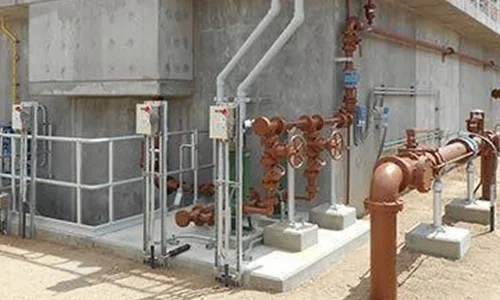
EWR MONITORING
Environmental Water Reclamation (EWR) is a hot topic in areas that are facing water shortages, but remote holding tanks can also become hot spots for all sorts of bacterial growth. Thanks in part to SensiCLĒNE™, the MP5™ is unaffected by flow and turbidity, making it a good choice to build a robust, low-maintenance monitoring system.
Latest Blog

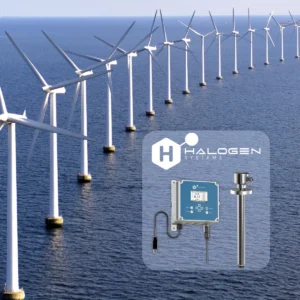
Offshore Windfarms Benefit Form Halogen System Inc.’s Chlorine Analyzer Technology



Air Travel & Potable Water Problems – Our Chlorine Analyzer Can Help
